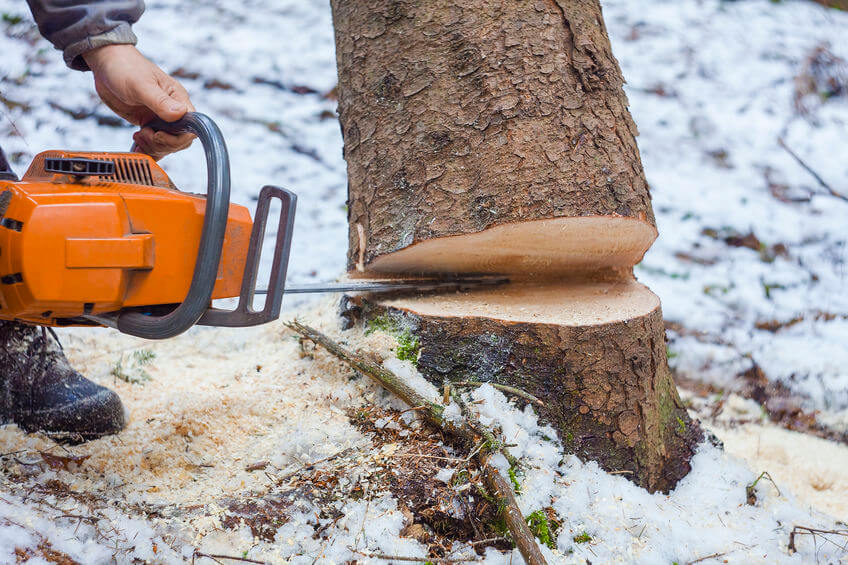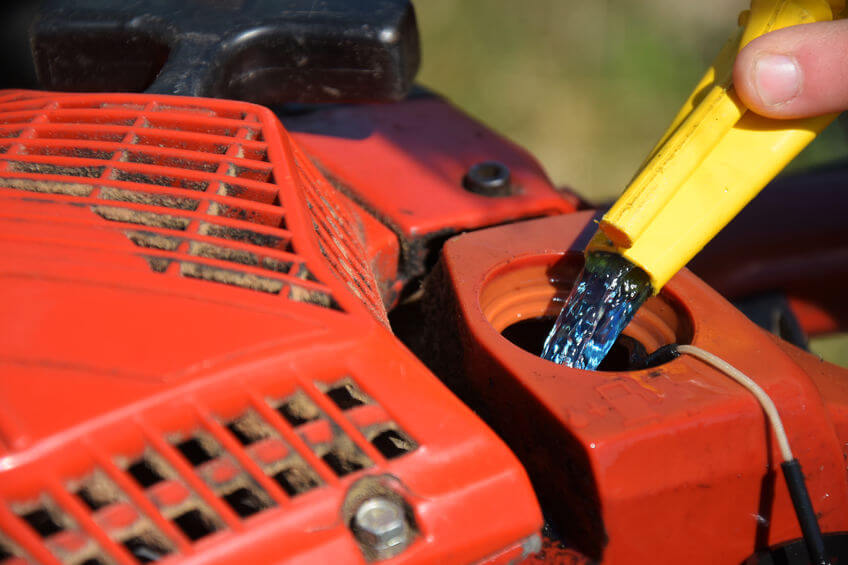- Home
- Chainsaw Maintenance
- How to Measure a Chainsaw Bar
How To Measure A Chainsaw Bar
This post may contain affiliate links so I earn a commission.
Learning how to measure a chainsaw bar is important and it’s a skill every chainsaw operator should know.
Whether you’re trying to figure out what size bar you currently have so that you can buy a chain to fit it - or you want to know whether your saw can handle a larger bar - this article will tell you everything you need to know.
Bar sizing and measurement is not a one-size-fits-all affair.
Not every chain or bar is right for every saw.
For instance, some larger bars work better with more powerful saws, as more energy is required to drive a chain around a longer bar.
How To Measure A Chainsaw Bar
By determining the size of your bar, you’ll be able to find a replacement bar with ease.
Why do you need to find the right size bar?
As mentioned earlier, not all chainsaws can handle all bar lengths.
Long bars require more engine power (which is why electric saws usually can’t handle anything more than an 18” blade - they lack the power necessary to drive a longer chain and bar).
Gas chainsaws, though often more expensive, can have extremely long bars - some are 72 inches!
They have the engines necessary to handle these long bars.
Don’t make the mistake of assuming that you can stretch a chainsaw chain to fit whatever bar you have, either.
Each is tailored to fit a certain size bar.

When you walk into a chainsaw shop to buy a
new bar, you’ll need to have two measurements in mind - the cutting length
(also known as the called length or usable length) and the true length.
Get the cutting length measurement first.
To do this, use a tape to measure your bar from the front tip all the way back to the cutter, close to the body of the saw.
You will need to round up, usually to the nearest even number in inches.
So while your bar might measure 18 ¾”, it will have a cutting length (or called length) of 20”.
Don’t worry - that little extra that you’re tacking on won’t hurt anything!
Another measurement you can use is that of the true length.
This is the actual full length of the bar from tip to end prior to being installed.
To get this length measurement, you must remove the blade from your saw.
Unscrew the bolts that hold it in place, which are usually located to the right, just past the bar’s base.

Next, after you have removed the blade, you can lay the saw flat on the ground.
Measure the distance from end to end, without rounding up.
This is the actual, “true” length of the blade, so you don’t need to make any approximations.
It should be spot-on.
Although this method is a little more labor intensive, it's important to know when learning how to measure a chainsaw bar.
Measuring A Chainsaw Chain
Do you also need a replacement chain to go with your new bar?
Often, these two measurements go hand in hand.
You can easily figure out what size replacement chain you need by determining the gauge and pitch of your chain.
Pitch refers to the distance between the drive links, while gauge refers to the groove width where the chain fits to the bar.
To get the pitch measurement, measure the distance between three consecutive rivets (the round studs that hold the segments of chain together).
Divide this by two.
For the most part, you will usually see pitch measured as either ⅜” or .325”.

To figure out the gauge measurement, gather up a penny, a quarter, and a dime.
Use a bar cleaning tool to get as much grime and debris out of the groove as you can.
Then, slide each coin into the groove one by one.
Which one fits the best?
If it’s a quarter, that means you have a 0.063 gauge chain.
If it’s a dime, you have a 0.050 gauge, and if it’s a penny, you have a 0.058.
Simple enough!
But wait! You might not have to go to all this effort.
Sometimes, chainsaw bars have all the information you need imprinted on them.
These measurements are usually found on the back of the bar where it mounts to the saw which takes all the guesswork out of understanding how to measure a chainsaw bar.
Chainsaw Bar Maintenance And When To Replace It
Maintaining a chainsaw bar is easy.
First, start by loosening your tightening screw.
Remove the clutch cover, push gently on the bar, and remove your chain.
Use a screwdriver to gently clean the grooves in the bar, as you may have done when measuring your chain.

Clean the chain oil lubrication oiler and make sure the nose wheel isn’t loose.
If it’s loose, it might be time for a new bar.
Make sure there aren’t any nicks in the bar and remove them with a flat file (this isn’t necessarily a reason to run out and buy a new bar!).
Finally, check the bar thoroughly for any wear and tear.
You’ll want to check the sides (if just one side is worn, you can turn it around - if both are worn, you may need a new bar) and the guide bar groove.
Do this by wiggling the chain.
If there’s any give or wobble, it’s time
for a new bar too.
When Measuring A Chainsaw Bar Is Not Necessary
Plan on buying a new chainsaw bar and/or chain?
If so, getting exact measurements for both is vital.
Don’t try to “eyeball it,” “guesstimate,” or just throw out a random number altogether.
You need to be precise.
Trying to install a bar and chain on your chainsaw that aren’t meant to be used on that specific saw could lead to a ton of disastrous consequences.
It could cause you to get hurt or to damage your saw.

Therefore, understanding how to measure a chainsaw bar (and
chain) is almost always necessary - except in one unique circumstance.
If you are reading this article, there’s a good chance that you’re doing so because you are in the market for a new chainsaw bar.
Before you buy though, be sure to think it through.
A new bar can cost anywhere between $20 and $100.
Add in the chain you need, and you could pay even more.
If your chainsaw is used and already a little worse for wear, you may want to simply invest that money in a new chainsaw altogether, rather than piecing together the new parts.
You’ll get that bar, plus they’ll come already measured and installed.
Otherwise, knowing how to measure a chainsaw bar is essential - without the proper knowledge, you could end up wasting your money on a bar that won’t fit your saw.
Happy shopping!

About the Author
Obsessed with firewood, Nick is behind over 350+ of Firewood For Life's articles, as well as countless reviews, guides and YouTube videos to help readers like you reduce heating costs and create the perfect fire.


